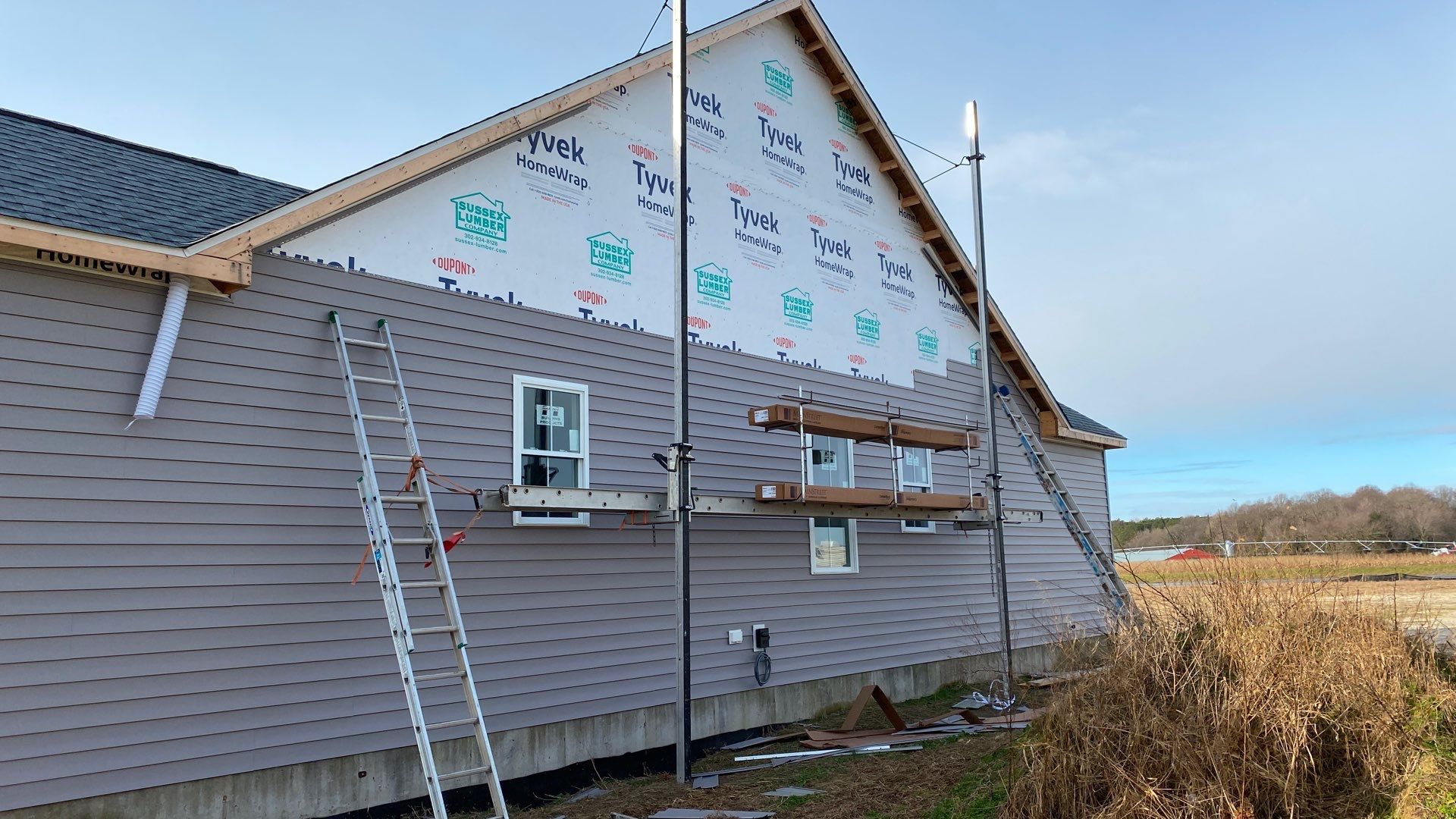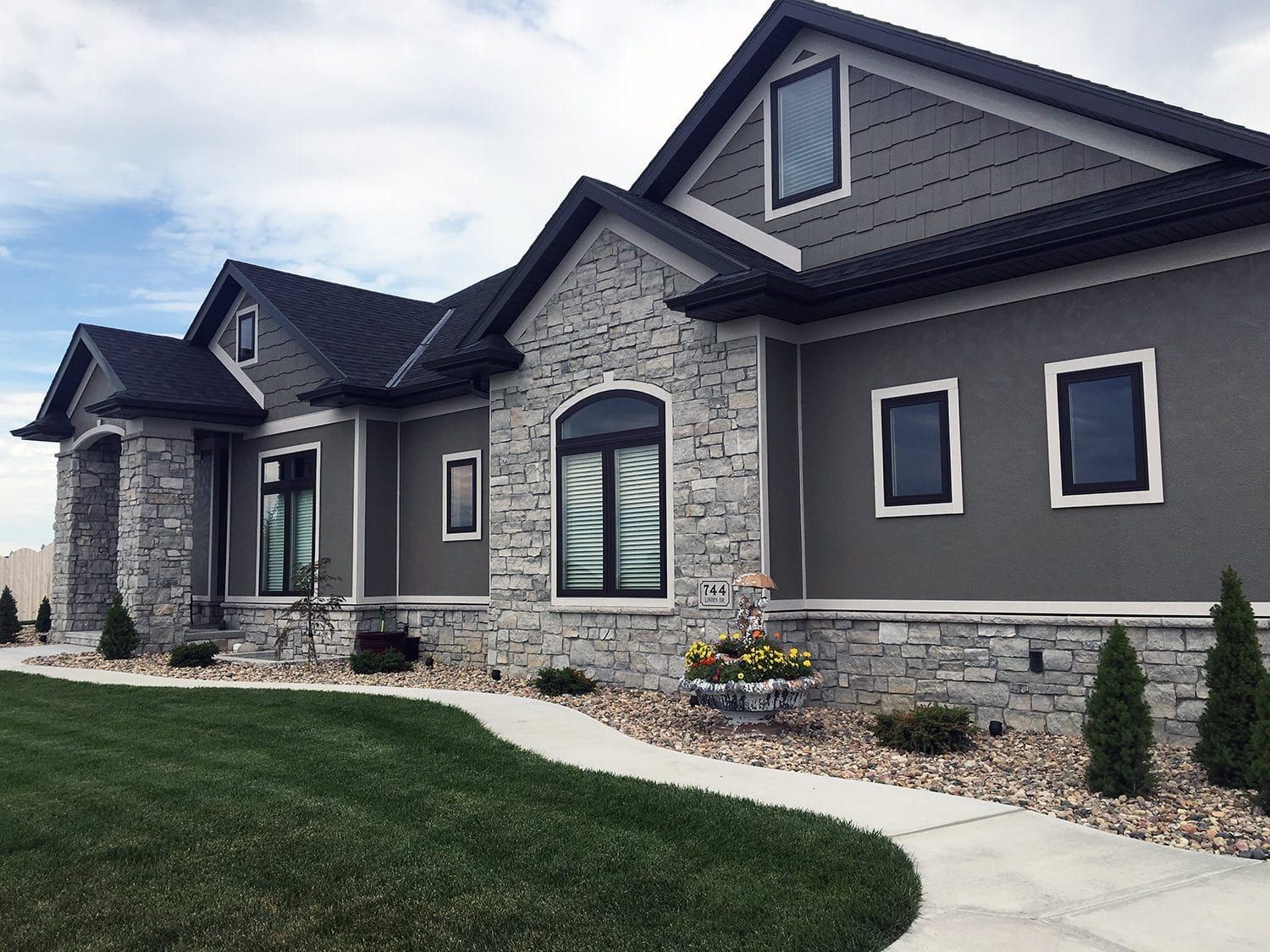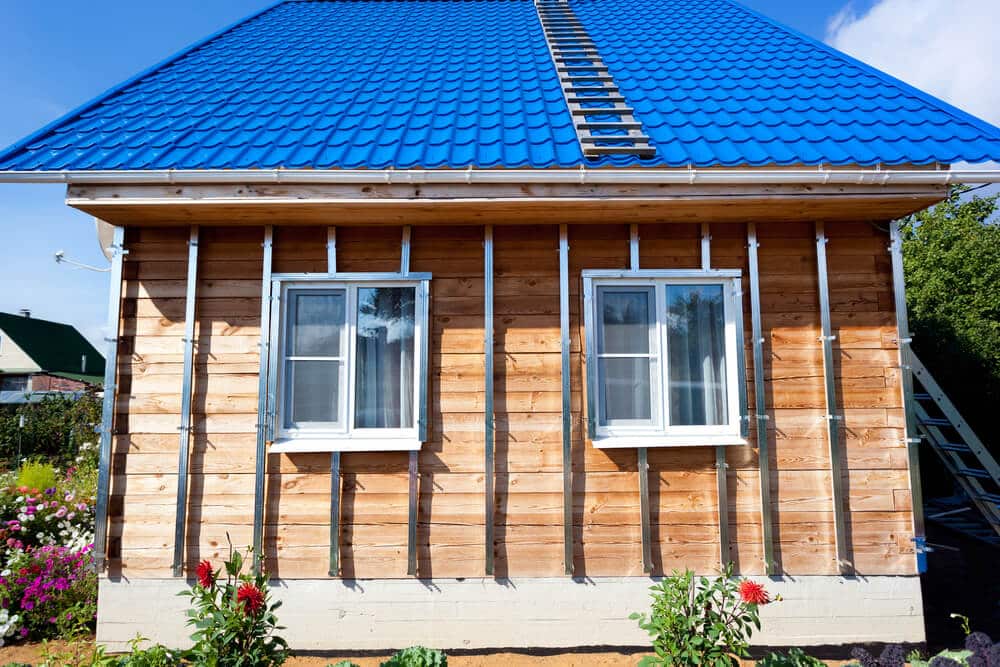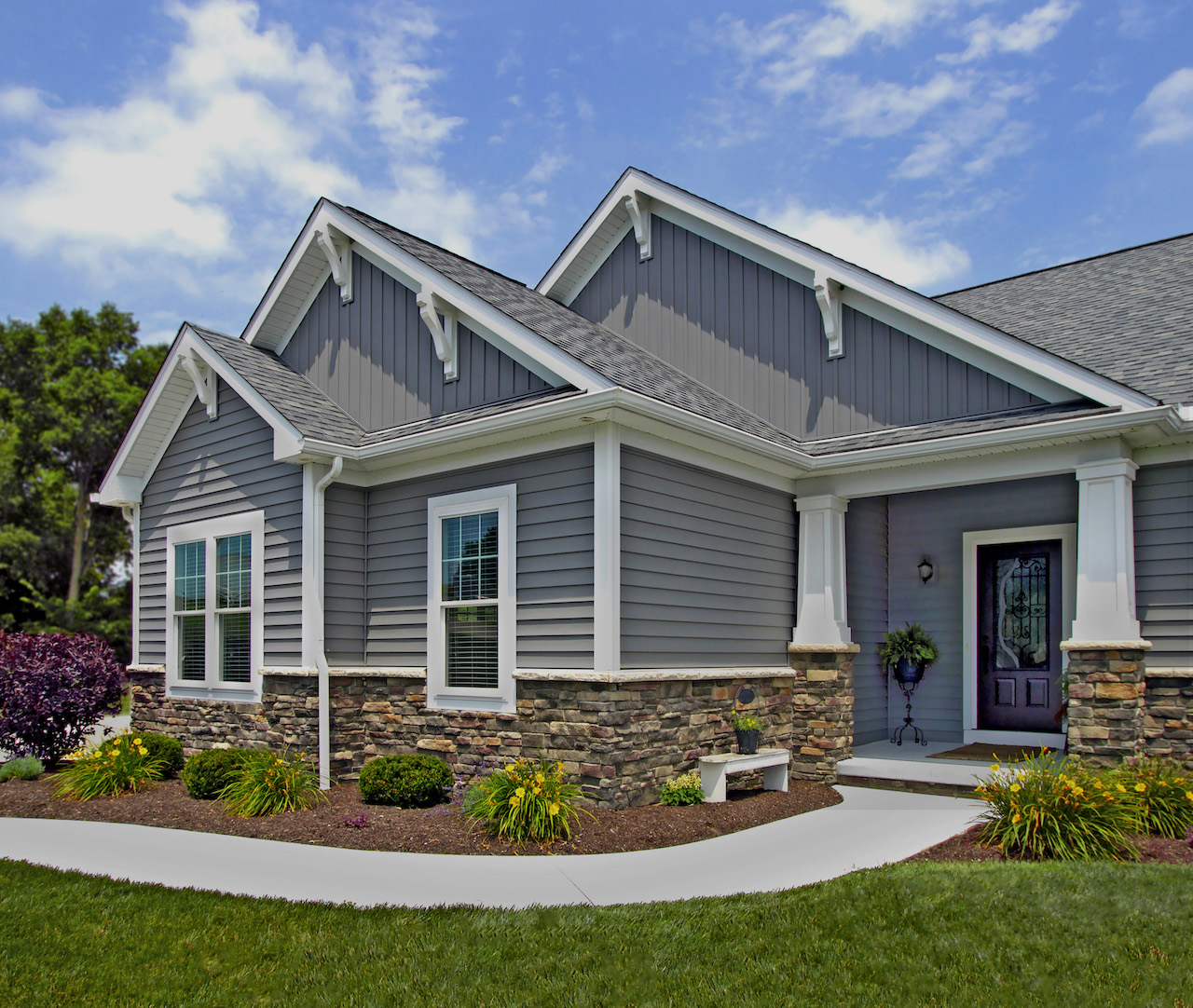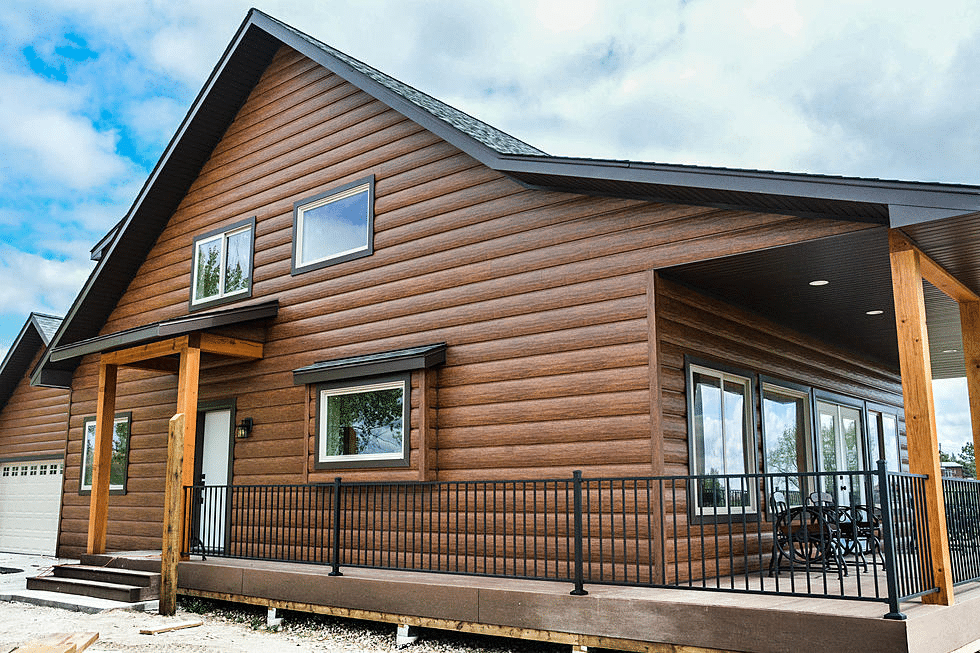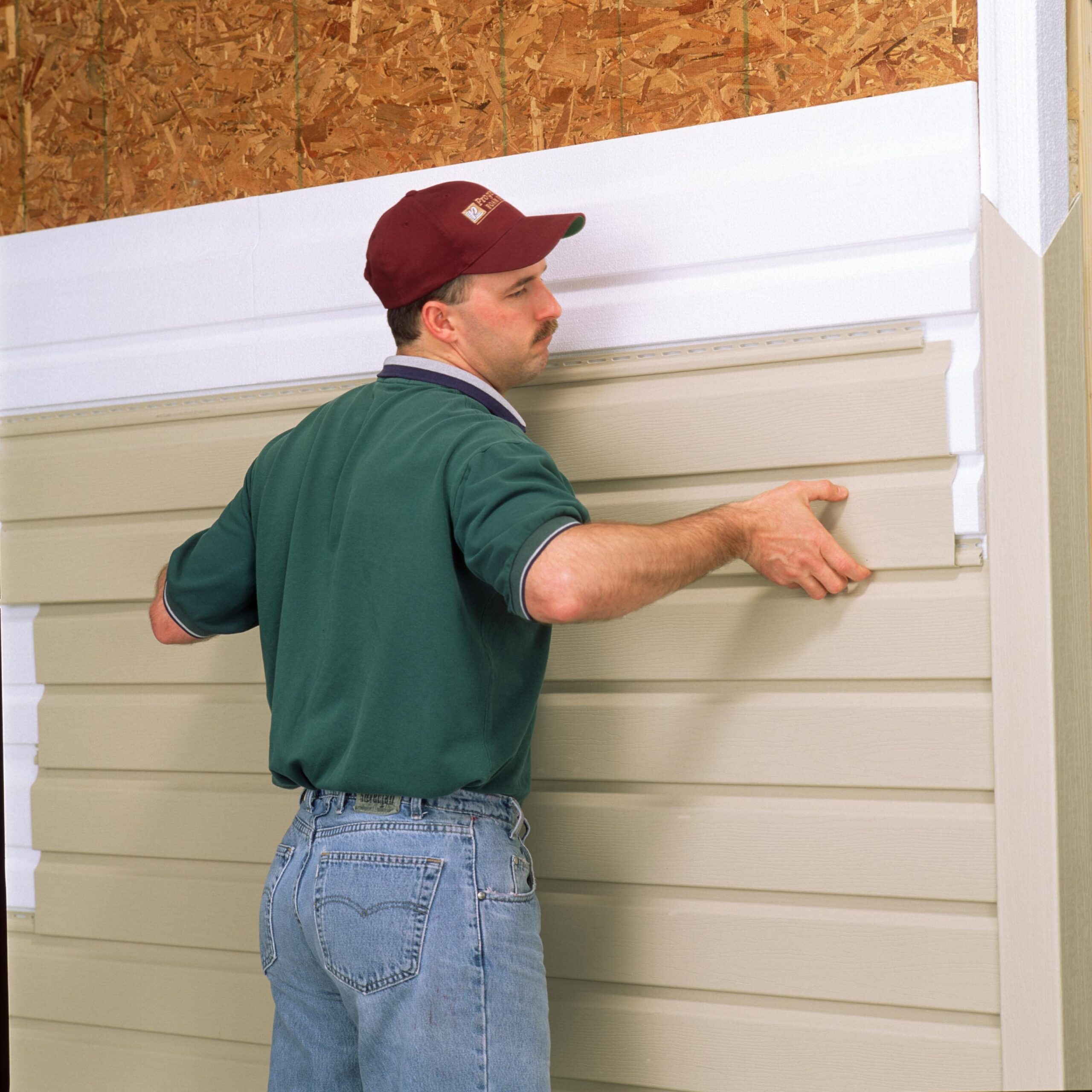Insulated Siding Cost Per Square Foot
Insulated siding cost per square foot varies greatly depending on several factors. This guide explores those factors, from material choice (vinyl, fiber cement, etc.) and thickness to regional labor costs and installation complexity. We’ll break down the costs involved, compare different siding options, and offer tips for saving money while improving your home’s energy efficiency and curb appeal.
Understanding the cost of insulated siding is crucial for any homeowner considering an upgrade. This involves analyzing not just the initial material expense but also factoring in labor, installation methods, and the long-term energy savings. We’ll delve into the specifics of different installation processes, explore the impact of existing siding conditions, and compare the long-term cost-effectiveness of various materials to help you make an informed decision.
Factors Influencing Insulated Siding Cost
The price of insulated siding varies considerably depending on several interconnected factors. Understanding these factors is crucial for accurate budgeting and informed decision-making during a home renovation or new construction project. This section will break down the key elements impacting the cost per square foot.
Material Type and Cost
Insulated siding comes in various materials, each with its own price point and performance characteristics. Vinyl siding is generally the most affordable option, while fiber cement and engineered wood siding are significantly more expensive. The differences in cost reflect variations in manufacturing processes, material durability, and aesthetic appeal. For example, fiber cement siding’s superior durability and fire resistance justify its higher price tag compared to vinyl.
Thickness and R-Value
The thickness of the siding directly correlates with its insulating capacity, measured by the R-value. A higher R-value indicates better insulation, leading to lower energy bills. Thicker siding, naturally, tends to cost more per square foot. However, the long-term savings from reduced energy consumption can offset the initial higher investment. For instance, a homeowner choosing siding with an R-value of 7 might see lower heating and cooling costs compared to one with an R-value of 4, even though the higher R-value siding is more expensive upfront.
Installation Complexity
The complexity of the installation significantly impacts the labor costs associated with insulated siding. Factors such as the home’s size and shape, existing siding conditions, and the need for additional work (e.g., window and door flashing) all contribute to the overall installation time and cost. A simple, straightforward installation on a new home will be cheaper than a complex renovation requiring significant preparation and extra labor. For example, removing old asbestos siding before installing new insulated siding will dramatically increase the overall cost.
Cost Comparison of Insulated Siding Materials
| Material | Cost Range ($/sq ft) | R-value | Pros/Cons |
|---|---|---|---|
| Vinyl | $2 – $8 | Variable, often low (R-2 to R-5) | Pros: Affordable, low maintenance. Cons: Less durable than other options, can fade over time. |
| Fiber Cement | $8 – $15 | Variable, can achieve higher R-values with added insulation | Pros: Durable, fire-resistant, low maintenance. Cons: More expensive than vinyl, can be brittle. |
| Engineered Wood | $10 – $20+ | Variable, often moderate to high R-values depending on the core material | Pros: Attractive appearance, good insulation. Cons: More susceptible to moisture damage than fiber cement. |
| Insulated Vinyl | $4 – $12 | Variable, typically higher than standard vinyl | Pros: Combines affordability with improved insulation. Cons: May not be as durable as fiber cement or engineered wood. |
Regional Variations in Cost
Labor costs and material availability fluctuate significantly across different regions. Areas with a high cost of living or a shortage of skilled labor will generally have higher installation costs. Similarly, regions with limited access to specific siding materials may experience higher material prices due to transportation and supply chain issues. For example, a project in a densely populated coastal city might cost more than a similar project in a rural area with readily available materials and lower labor rates.
Installation Costs and Processes
Insulated siding installation is a multifaceted process significantly impacting the overall project cost. Understanding the steps involved and the associated labor expenses is crucial for accurate budgeting and realistic project timelines. This section details the typical installation process, breaks down labor costs, and examines how the condition of existing siding affects the overall expense.
The installation process itself involves several key steps, each contributing to the final cost. The complexity of these steps and the time required can vary based on factors such as the house’s size and design, the type of siding being installed, and the existing condition of the exterior walls.
Typical Insulated Siding Installation Steps
A typical insulated siding installation follows a sequential process. Proper execution of each step ensures a durable and aesthetically pleasing result. Deviations from this process can lead to increased costs and potential problems down the line.
- Preparation: This involves removing existing siding (if applicable), inspecting the underlying sheathing for damage, and making necessary repairs. This step might include addressing issues like rotted wood or damaged flashing.
- Installation of sheathing (if needed): If the existing sheathing is inadequate or damaged, new sheathing needs to be installed to provide a solid base for the siding.
- Vapor barrier installation: A vapor barrier is crucial to prevent moisture damage. This is installed over the sheathing to create a moisture-resistant layer.
- Siding installation: This is the main part of the process, involving carefully fitting and attaching the insulated siding panels. This requires precision and attention to detail to ensure proper alignment and sealing.
- Trimming and finishing: This final step involves trimming excess siding, caulking seams, and installing any necessary trim pieces to complete the project. This is crucial for a professional look and watertight seal.
Labor Cost Breakdown for Insulated Siding Installation
Labor costs for insulated siding installation vary depending on several factors, including the installer’s experience, geographic location, and the complexity of the project. The following table provides a general estimate of labor costs per square foot for different installation steps. These are estimates and actual costs may vary.
| Installation Step | Labor Cost ($/sq ft) | Time Required | Potential Challenges |
|---|---|---|---|
| Preparation | $0.50 – $1.50 | 1-3 hours per 100 sq ft | Dealing with difficult-to-remove existing siding, extensive repairs needed. |
| Sheathing Installation (if needed) | $1.00 – $3.00 | 2-6 hours per 100 sq ft | Working with uneven surfaces, needing to cut and fit sheathing precisely. |
| Vapor Barrier Installation | $0.25 – $0.75 | 1-2 hours per 100 sq ft | Working in challenging weather conditions, ensuring proper overlap and sealing. |
| Siding Installation | $1.50 – $4.00 | 4-8 hours per 100 sq ft | Working with complex angles and corners, maintaining consistent spacing and alignment. |
| Trimming and Finishing | $0.50 – $1.50 | 1-3 hours per 100 sq ft | Precise cutting and fitting of trim pieces, ensuring a watertight seal. |
Impact of Existing Siding Condition on Installation Costs
The condition of the existing siding significantly influences the overall installation cost. Removing old siding adds time and labor, increasing the overall expense. For example, if the existing siding is asbestos-containing material, specialized removal and disposal are required, significantly increasing the cost. Similarly, extensive repairs to the underlying sheathing due to rot or insect damage add to the labor and material costs.
In cases where the existing siding is in good condition and only requires minor repairs, the overall cost will be lower compared to situations requiring complete removal and replacement of the underlying structure. A thorough inspection of the existing siding is crucial for accurate cost estimation.
Material Specifications and Properties
Choosing the right insulated siding depends heavily on understanding the material specifications and properties. This section details the thermal performance, durability, and maintenance requirements of common insulated siding materials to help you make an informed decision. We’ll also explore the visual differences between options to ensure the aesthetic aligns with your home’s style.
Insulated Siding Material Properties
The table below summarizes key characteristics of popular insulated siding materials. Note that specific values can vary depending on the manufacturer and product line. Always refer to the manufacturer’s specifications for precise data.
| Material | Thickness (inches) | R-value | Lifespan (years) |
|---|---|---|---|
| Foam-backed Vinyl | 0.5 – 1.0 | 3-5 | 20-30 |
| Polyurethane Foam with Vinyl Cladding | 0.75 – 1.5 | 4-7 | 25-40 |
| Fiber Cement with Foam Insulation | 0.75 – 1.25 | 4-6 | 30-50 |
| Insulated Metal Siding (with foam core) | 0.5 – 1.0 | 3-6 | 30-50 |
Appearance and Texture Variations
Insulated siding offers a wide array of aesthetic choices. Foam-backed vinyl siding mimics the look of traditional wood siding, offering various colors and textures, often replicating the look of wood grain with varying degrees of realism. Polyurethane foam siding, similarly, can be clad in vinyl to achieve a similar aesthetic. Fiber cement siding, however, provides a more sophisticated, often smoother, look, sometimes resembling stucco or even natural stone depending on the finish. Metal insulated siding presents a modern, clean look, and comes in a variety of colors and finishes, ranging from smooth to textured. The texture can range from a relatively smooth surface to a deeply embossed texture mimicking wood or stone.
Comparative Analysis of Insulated Siding Materials
This table compares different insulated siding materials based on energy efficiency and long-term costs. Remember that actual costs will depend on factors like labor, regional pricing, and material availability.
| Material | Advantages | Disadvantages |
|---|---|---|
| Foam-backed Vinyl | Relatively inexpensive, easy installation, low maintenance, wide variety of colors and styles. | Lower R-value compared to other options, shorter lifespan than some alternatives, can be susceptible to damage from impact. |
| Polyurethane Foam with Vinyl Cladding | High R-value, good insulation properties, durable, relatively low maintenance. | Higher initial cost than vinyl siding, can be more challenging to install than vinyl. |
| Fiber Cement with Foam Insulation | Excellent durability, long lifespan, fire-resistant, attractive appearance. | High initial cost, more complex installation requiring specialized tools, heavier than other options. |
| Insulated Metal Siding | Very durable, long lifespan, fire-resistant, low maintenance, energy-efficient. | High initial cost, can dent or scratch, potential for noise transmission in some cases. |
Cost-Saving Strategies and Considerations
Insulated siding offers significant long-term benefits, but the initial investment can be substantial. Understanding cost-saving strategies and the long-term return on investment is crucial for homeowners. By carefully planning and making informed decisions, you can significantly reduce the overall cost without compromising quality.
Choosing cost-effective strategies doesn’t necessarily mean sacrificing quality. Instead, it involves making smart choices regarding materials, labor, and project scope. Prioritizing energy efficiency through proper insulation can lead to significant savings on energy bills over the life of the siding, offsetting the initial investment.
Potential Cost-Saving Measures
Careful planning and consideration of various factors can significantly reduce the overall cost of insulated siding installation. Prioritizing certain aspects over others, and understanding the trade-offs, can lead to substantial savings.
- DIY Preparation: Homeowners can save money by handling tasks like surface preparation themselves, such as removing old siding and cleaning the exterior walls. This reduces labor costs, although it requires time and effort, and it’s crucial to ensure proper preparation to avoid future issues.
- Choosing Less Expensive Materials: While high-quality insulated siding offers superior durability and energy efficiency, exploring more budget-friendly options within reputable brands can still yield excellent results. Comparing different materials and their warranties can help find a balance between cost and performance.
- Negotiating with Contractors: Obtaining multiple quotes from different contractors and negotiating prices can lead to significant savings. Clearly outlining the project scope and comparing bids based on materials, labor, and warranties is essential.
- Optimizing Project Scope: Focusing on high-priority areas of the house first, or opting for partial siding replacement instead of a complete overhaul, can reduce the overall project cost. This approach is particularly helpful if budget constraints are a major concern.
Long-Term Cost Benefits of High-Quality Siding
Investing in high-quality insulated siding, despite the higher upfront cost, often translates to significant long-term savings. The superior energy efficiency and durability contribute to lower energy bills and reduced maintenance costs over the lifespan of the siding.
For example, a homeowner in a colder climate might see a 15-20% reduction in heating costs annually with properly installed insulated siding. This reduction, compounded over several years, can easily offset the initial price difference compared to cheaper, less efficient options. Furthermore, high-quality siding requires less maintenance and is less prone to damage, minimizing repair and replacement expenses. A high-quality vinyl siding installation, for instance, can last 20-30 years or more with minimal maintenance.
Impact of Home Size and Project Complexity
The overall cost per square foot of insulated siding installation is significantly influenced by the size and complexity of the home and the project. Larger homes naturally require more materials and labor, increasing the overall cost.
A simple, rectangular home with minimal architectural details will generally cost less per square foot than a home with complex angles, multiple stories, or intricate trim work. Homes requiring extensive repairs or specialized techniques, such as the removal of asbestos siding, will also increase the cost per square foot. For example, a 2,000 square foot ranch-style home might cost $8-$12 per square foot, while a 3,000 square foot Victorian home with intricate details could cost $15-$25 or more per square foot. These are estimates, and actual costs will vary depending on location and specific project requirements.
Visual Representations of Insulated Siding
Choosing insulated siding involves considering not only its thermal properties but also its aesthetic contribution to your home’s overall appearance. The right siding can dramatically enhance curb appeal and property value. Let’s explore some visual examples to illustrate the diverse options available.
Examples of Insulated Siding Installations
Below are three distinct examples showcasing the variety in materials, aesthetics, and perceived cost associated with insulated siding.
Example 1: Traditional Vinyl Siding with Foam Insulation
Imagine a two-story colonial home clad in classic white vinyl siding. This siding features a smooth, slightly textured finish, mimicking the look of painted wood clapboard. The underlying foam insulation is not visible, but its presence contributes to a consistent, even appearance. Simple, dark-brown trim around windows and doors provides a clean contrast. The overall aesthetic is timeless and understated. The perceived cost is moderate, representing a good balance between affordability and improved energy efficiency. The color palette is simple and easily maintained, adding to its cost-effectiveness in the long run.
Example 2: Modern Fiber Cement Siding with Integrated Insulation
Consider a contemporary ranch-style home with sleek, charcoal-grey fiber cement siding. This siding features a subtle, linear texture and a matte finish. The integrated insulation is part of the siding panel itself, contributing to a cleaner, more streamlined installation. The trim is minimalist, using the same charcoal-grey color, with thin, metallic-looking accents around windows and doors. The overall aesthetic is sophisticated and modern, conveying a sense of high-end design. The perceived cost is higher due to the premium material and potentially more complex installation.
Example 3: Rustic Engineered Wood Siding with Polyisocyanurate Insulation
Picture a charming cabin-style home featuring rustic, light-brown engineered wood siding. This siding boasts a pronounced wood grain texture, giving it a natural, warm appearance. The polyisocyanurate insulation is sandwiched between the siding panels, providing excellent thermal performance. Dark brown, rough-hewn wood trim complements the siding’s natural aesthetic. The overall aesthetic is cozy and inviting, evoking a sense of comfort and rustic charm. The perceived cost is high, reflecting the premium material and the potential need for specialized installation to maintain the rustic aesthetic.
Curb Appeal Enhancement through Insulated Siding: A Cost-Benefit Analysis
Consider a 1970s-era split-level home with outdated, peeling aluminum siding. The house looks tired and lacks visual appeal. Replacing this siding with insulated vinyl siding in a warm, inviting beige color, accented with crisp white trim, would dramatically transform the home’s appearance. The new siding would not only improve the home’s curb appeal, making it more attractive to potential buyers, but it would also significantly enhance its energy efficiency. This translates to lower energy bills, offsetting a portion of the initial investment. Let’s say the total cost of the siding replacement is $15,000. However, assuming an annual energy savings of $500 due to improved insulation, the cost would be recouped over 30 years. Beyond the financial benefits, the increased curb appeal could potentially increase the home’s market value by 5-10%, further justifying the investment. The improved aesthetics, combined with long-term energy savings and increased property value, make the cost of the insulated siding a worthwhile investment.
Ending Remarks
Ultimately, the cost of insulated siding per square foot is a multifaceted calculation. While the initial investment might seem significant, the long-term benefits – improved energy efficiency, increased home value, and enhanced curb appeal – often outweigh the upfront expense. By carefully considering the factors discussed here, including material selection, installation costs, and regional variations, homeowners can make a sound investment that enhances both their home’s comfort and its value.



